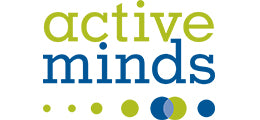“I’ve seen guys who look like action figures who couldn’t hurt a fly with a punch and I’ve seen plenty of guys who look like tubby weaklings who can throw down with the best of them. So what’s the thing that causes this difference? It’s the core.” – Andrew Read, Strength and Conditioning Expert
We all know that strengthening “our core” is something that is important for our health and athletic performance. The easily recognizable sign of a solid core is a six-pack. Six-pack abs are visible when the rectus abdominis muscles, two parallel muscles running vertically, each separated by horizontal connective tissue bands, are prominent due to low body fat. Despite our fixation with the six-pack, it is common to achieve one without having a strong core. The core is much more than our visible abdominal muscles. It includes all the muscles in the torso that keep the body balanced and stable. Lesser known muscles, such as the multifidus, diaphragm, and pelvic floor, are deeper in our bodies, but nonetheless play key roles in core functioning.
Here are 6 Purposes of the Core besides a 6-Pack:
1. Performs Functional Movements
Our core is critical to our bodies’ movements. As we stand up, lift a bag, walk, or play sports, we use our core. Any body movement requires engaging the core. There are two types of core muscles: stabilizers and movers. The stabilizer muscles support the movement of the spine. The movers are the muscles support the stabilizer muscles and work with them to move the whole body. The term “functional training” has recently become more commonly discussed in the fitness literature. And there’s a good reason for this. Functional training is simply performing exercises and stretches that enable us to safely and efficiently complete our daily tasks – whether we walk to work or hike a steep mountain.
2. Solidifies Posture
Six-packs look sexy. They are the sizzle. There’s no doubt that most people want them and those who say they don’t are most likely lying. However, the real sign of core strength is not a six-pack. The real sign is superb posture. The core stabilizes the spine, controlling posture. “Every step, every arm swing, and every turn of the head is actively seeking to perturb your core. The harder and faster you expect to perform an action, the stronger and stiffer your core needs to be to maintain posture,” says strength and conditioning expert Andrew Read.
3. Prevents Injury
The core is a complex system of muscles working together to support and move the body safely. The most common gym injuries occur in the ankle, knee, lower back, shoulder, or neck. Preventive methods, as well as rehabilitative methods, for these injuries include strengthening the core. According to fitness instructor, coach, and author Jeff Kuhland, “research has shown that athletes with higher core stability have a lower risk of injury.” That should be no surprise if you’ve ever walked into the rehab area of a physical therapy clinic: core work is key.
4. Controls Movement
The core is a facilitator. It controls the force of other muscles in our bodies. To use a basketball analogy, the core is the point guard, “dishing off” to the other muscles, such as the quads, biceps, and pectorals, to ensure they perform their duties. Kuhland says, “We must look at core strength as the ability to produce force with respect to core stability, which is the ability to control the force we produce.” A great example of the power of core strength in action was 5-foot 7-inch martial arts legend Bruce Lee.
5. Impacts the Whole Body
A strong or weak core can set off a ripple effect that impacts not only adjacent muscle groups, but every area of our bodies. A Harvard Medical School article on strengthening the core says, “No matter where motion starts, it ripples upward and downward to adjoining links of the chain. Thus, weak or inflexible core muscles can impair how well your arms and legs function. And that saps power from many of the moves you make.”
6. Stabilizes the Body
Walk into any gym in America and you’ll see someone doing sit-ups, crunches, or back extensions, and in many cases a ton of them. Kuhland says, “The core most often acts as a stabilizer and force transfer center rather than a prime mover. Yet consistently people focus on training their core as a prime mover and in isolation. By training that way, not only are you missing out on a major function of the core, but also better strength gains, more efficient movement, and longevity of health.” Isolated training creates imbalance and does not train for function, what we actually need our body to perform. Read says, “One of the keys to performance is that muscles learn to work together, and deliberately training them to be used individually leads to problems when you ask someone to take that gym built strength and turn it into sports performance.”
This post shows why the Core Flyte stability trainer is such an important and powerful piece of fitness equipment. The Core Flyte activates our core when we perform static and dynamic exercises, engaging more muscles – ones we may not know we have but are critical – along the way.
We'd love to hear from you. How do you work out to engage all aspects of your core? Comment below or on our Facebook page at facebook.com/flytefitness, or tweet us at @flytefitness.
Be Flyte Fit,
Jeremy Greenberg
Co-Founder & CEO
Flyte Fitness
